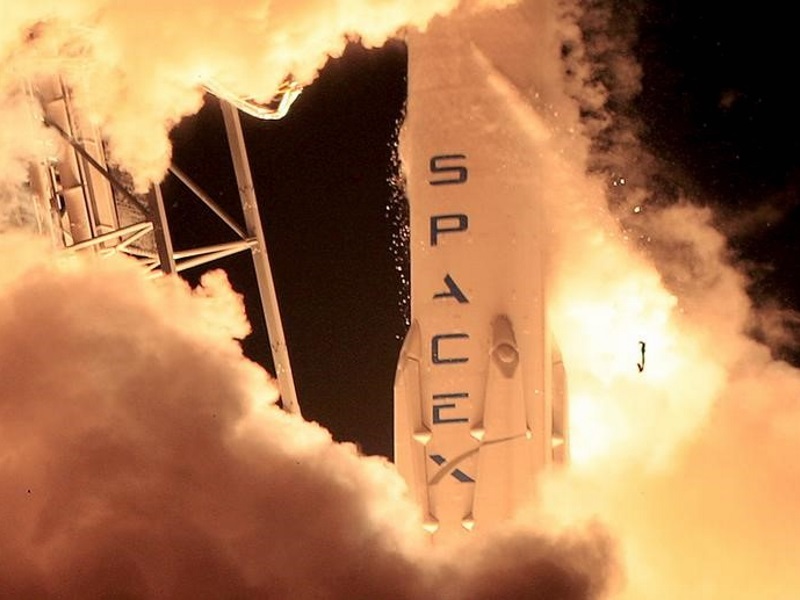- Home
- Science
- Science News
- SpaceX Targets 2018 for First Mars Mission
SpaceX Targets 2018 for First Mars Mission

US space agency Nasa, which is aiming for a human mission to Mars in the 2030s, said it will provide technical support for SpaceX's first foray, known as Red Dragon.
SpaceX "could provide valuable entry, descent and landing data to Nasa for our journey to Mars, while providing support to American industry," Nasa said in a statement.
The announcement marks SpaceX's first target date for its unmanned mission to Mars.
(Also see: SpaceX Breaks Boeing-Lockheed Monopoly on Military Space Launches)
The SpaceX program is intended to develop technologies needed for human transportation to Mars, a long-term aim for Musk's privately held company, which is formally known as Space Exploration Technologies.
The company said it will provide details of its Mars program at the International Astronautical Congress in September.
"Dragon 2 is designed to be able to land anywhere in the solar system," Musk posted on Twitter. "Red Dragon Mars mission is the first test flight."
He said that with an internal volume about the size of a sports utility vehicle, the Dragon spacecraft would be uncomfortable for people making the long journey to Mars.
Musk, a billionaire entrepreneur who helped to found Tesla Motors and PayPal, started SpaceX in 2002 with the goal of slashing launch costs to make Mars travel affordable.
SpaceX intends to debut its Mars rocket, a heavy-lift version of the Falcon 9 booster currently flying, later this year.
The company recently has made spaceflight history by returning Falcon 9 rockets to landing pads on land and sea - key to Musk's quest to develop a relatively cheap, reusable launch vehicle.
SpaceX now flies cargo versions of its Dragon capsule to and from the International Space Station under a $2 billion resupply services contract with Nasa.
SpaceX also is upgrading the capsules to carry astronauts, with test flights to the station scheduled for 2017, under a separate Nasa contract worth up to $2.6 billion.
Nasa does not plan to provide financial assistance to SpaceX's Mars mission. The agency is investing in its own heavy-lift rocket, capsule and launch pad modifications targeting Mars travel.
By the time Nasa expects to debut a test flight in lunar orbit with astronauts onboard in 2023, the agency will have spent about $24 billion on the program, an April 2016 Government Accountability Office report shows.
© Thomson Reuters 2016
For the latest tech news and reviews, follow Gadgets 360 on X, Facebook, WhatsApp, Threads and Google News. For the latest videos on gadgets and tech, subscribe to our YouTube channel. If you want to know everything about top influencers, follow our in-house Who'sThat360 on Instagram and YouTube.
Related Stories
- Samsung Galaxy Unpacked 2025
- ChatGPT
- Redmi Note 14 Pro+
- iPhone 16
- Apple Vision Pro
- Oneplus 12
- OnePlus Nord CE 3 Lite 5G
- iPhone 13
- Xiaomi 14 Pro
- Oppo Find N3
- Tecno Spark Go (2023)
- Realme V30
- Best Phones Under 25000
- Samsung Galaxy S24 Series
- Cryptocurrency
- iQoo 12
- Samsung Galaxy S24 Ultra
- Giottus
- Samsung Galaxy Z Flip 5
- Apple 'Scary Fast'
- Housefull 5
- GoPro Hero 12 Black Review
- Invincible Season 2
- JioGlass
- HD Ready TV
- Laptop Under 50000
- Smartwatch Under 10000
- Latest Mobile Phones
- Compare Phones
- Moto G15 Power
- Moto G15
- Realme 14x 5G
- Poco M7 Pro 5G
- Poco C75 5G
- Vivo Y300 (China)
- HMD Arc
- Lava Blaze Duo 5G
- Asus Zenbook S 14
- MacBook Pro 16-inch (M4 Max, 2024)
- Honor Pad V9
- Tecno Megapad 11
- Redmi Watch 5
- Huawei Watch Ultimate Design
- Sony 65 Inches Ultra HD (4K) LED Smart TV (KD-65X74L)
- TCL 55 Inches Ultra HD (4K) LED Smart TV (55C61B)
- Sony PlayStation 5 Pro
- Sony PlayStation 5 Slim Digital Edition
- Blue Star 1.5 Ton 3 Star Inverter Split AC (IC318DNUHC)
- Blue Star 1.5 Ton 3 Star Inverter Split AC (IA318VKU)

















